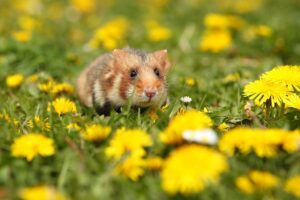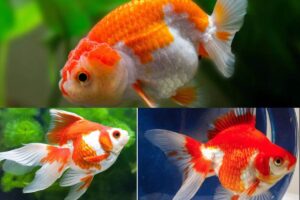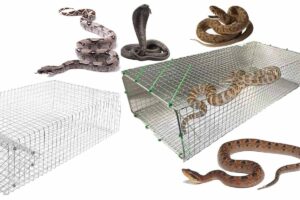The Cat Palm (Chamaedorea cataract arum) is a quintessential houseplant that infuses a room with tropical sophistication. Due to its arching fronds and low maintenance needs, it is well-liked by inexperienced and seasoned plant enthusiasts. However, it is essential to understand and cater to its specific care needs to achieve optimal growth and health. This thorough guide covers all the essentials of caring for a cat palm care, including lighting, temperature, humidity, watering, and more, to ensure your plant flourishes and improves your living environment.
What is a Cat Palm?
The Arecaceae family includes the Cat Palm, the Cascade Palm, and Cataract Palm. This indigenous species is found in the lush regions of southern Mexico and Central America. Unlike its solitary relatives, the Cat Palm is a clump-forming species. It grows multiple stems from the base, creating a dense, bushy appearance that can reach heights up to 6 feet. Because of this feature, it’s an excellent option for bringing vertical appeal to interior areas without overpowering them.
Origin of the Cat Palm
In its native habitat, the Cat Palm thrives in the humid, tropical environments of southern Mexico and Central America. These regions provide the plant with ample moisture and consistent warmth, and it grows near rivers and streams. Understanding this natural setting offers valuable insights into the plant’s needs regarding water and humidity. By replicating these conditions indoors, you can help your Cat Palm flourish and maintain its vibrant, lush appearance.
Cat Palm Care Guide
Sunlight
Cat Palms flourish in bright, indirect light, miming the dappled sunlight they receive in their natural habitat. While they can tolerate a small amount of direct sunlight, particularly the gentle morning rays through an east-facing window, prolonged exposure to intense direct light can cause leaf burn. Rotate the plant frequently to maintain even development and stop it from tilting toward the light source. This practice helps maintain balanced, lush foliage and supports overall plant health.
Temperature and Humidity
The ideal growing temperature range for the Cat Palm is 70 to 80 degrees Fahrenheit throughout the day. The perfect low temperature at night is in the 60s. Lower than fifty degrees Fahrenheit can harm leaves and negatively impact a plant’s health. Additionally, humidity is a critical factor for the Cat Palm’s well-being. The plant prefers a minimum of 50 percent humidity, reflecting its natural tropical environment. Consider using a humidifier or putting the plant in a naturally humid space, such the kitchen or bathroom, to maintain the proper humidity levels.
Watering
Watering is a fundamental aspect of Cat Palm care. The plant should be watered when the top layer of soil begins to dry out. Avoiding too much moisture is essential because overwatering is a typical problem that can result in root rot. Regularly checking saucers and cache pots ensures the plant is not in standing water. Consistent, moderate watering helps keep the soil moist but not saturated, promoting healthy root development and preventing rot.
Fertilizer
Cat Palms benefit from regular feeding during their growing season. In early spring, apply a balanced liquid houseplant fertilizer diluted to half strength once a month. This regimen supports robust new growth and overall plant vitality. As the growing season concludes in the fall, reduce or halt fertilization to allow the plant to enter its dormant phase. Over-fertilizing can disrupt the nutrient balance and negatively impact plant health.
Pruning and Maintenance
Although Cat Palms do not require frequent pruning, occasional maintenance enhances their appearance and health. Use clean, sharp, and sterilized shears or pruners to remove yellowed, dead, or damaged fronds at the base. This practice improves the plant’s aesthetic appeal and encourages the growth of fresh, healthy foliage. Regular maintenance helps prevent the accumulation of dead leaves and supports the plant’s overall vitality.
Container and Size
Selecting the appropriate container for your Cat Palm is crucial. Terracotta or clay pots are preferable because they wick away excess moisture, reducing the risk of root rot. Initially, choose a pot that closely matches the plant’s current size. Overly large containers can lead to water retention issues. As the plant grows, repot it into slightly larger containers to accommodate its expanding root system without overwhelming it.
Potting Soil and Drainage
A well-draining potting mix is vital for Cat Palm care health. The soil should retain moisture while allowing excess water to escape. Alternatively, you can make your palm potting mix by mixing equal parts pine bark and perlite with potting soil. This mix ensures optimal drainage and minimizes the risk of “wet feet,” which can lead to root rot. Good drainage is essential for preventing soggy conditions that can harm the plant’s roots.
Potting and Repotting
Cat Palms grow slowly and are sensitive to root disturbance, making repotting a delicate process. Plan to repot the plant every three years, choosing a pot only a few inches wider than the current one. Carefully remove the plant from its old pot, place it in the new pot, and fill the surrounding space with a well-draining potting mix. This approach minimizes stress and supports continued healthy growth. Avoid repotting too frequently, as it will disturb the plant and hinder its development.
Moving Cat Palm Outdoors for the Summer
Moving your Cat Palm outdoors during the summer can benefit the plant by exposing it to natural conditions. But, as direct sunlight can scorch the fronds, it is imperative to avoid it. Gradually acclimate the plant to outdoor conditions over several days to prevent shock. Keep the palms in a shaded or partially shaded location and monitor nighttime temperatures to ensure they do not drop below the plant’s tolerance.
When to Bring Cat Palm Back Inside?
As summer ends, monitor the cooling temperatures. When nighttime temperatures consistently fall to the 50s Fahrenheit, it is time to bring your Cat Palm back indoors. Conduct a thorough pest inspection before reintroducing the plant to your indoor environment. Place the palm in a warm, bright location to help it adjust smoothly and continue to thrive. Proper reintroduction ensures the plant remains healthy and adapts well to the indoor environment.
Conclusion
Caring for a Cat Palm involves understanding and addressing its needs to maintain its beauty and vitality. By adhering to light, temperature, humidity, watering, and repotting guidelines, you can cultivate a thriving Cat Palm care that adds lush, tropical allure to your indoor space. Regular attention to these care requirements will help prevent common issues and support the plant’s long-term health and vibrancy.
Frequently Asked Questions (FAQs)
Do Cat Palms need direct sunlight?
Cat Palms prefer bright, indirect light. They can tolerate a few hours of direct morning sunlight, but prolonged exposure to harsh afternoon sunlight can lead to leaf burn. Providing filtered light helps maintain the plant’s health and appearance.
Do Cat Palms like being misted?
While Cat Palms thrive in high humidity, misting is generally not recommended. Misting can create conditions conducive to plant diseases and does not adequately replicate the humidity levels the plant requires. Instead, use a humidifier or place the plant in a group with other humidity-loving plants to create a more suitable microclimate.
How do you propagate Cat Palm?
Propagation of mature Cat Palms is best achieved through division. Carefully separate sections of the plant, ensuring each section has some roots, and pot them individually. This method is more effective than seed propagation, which is slow and requires several years for the plants to mature.
Why is my Cat Palm Care turning yellow or brown?
Overwatering and prolonged sun exposure are two common causes of yellowing or browning of Cat Palm care fronds. To address these issues, ensure the plant receives appropriate light and monitor soil moisture levels closely. Adjusting care practices can help restore the plant to optimal health.





















